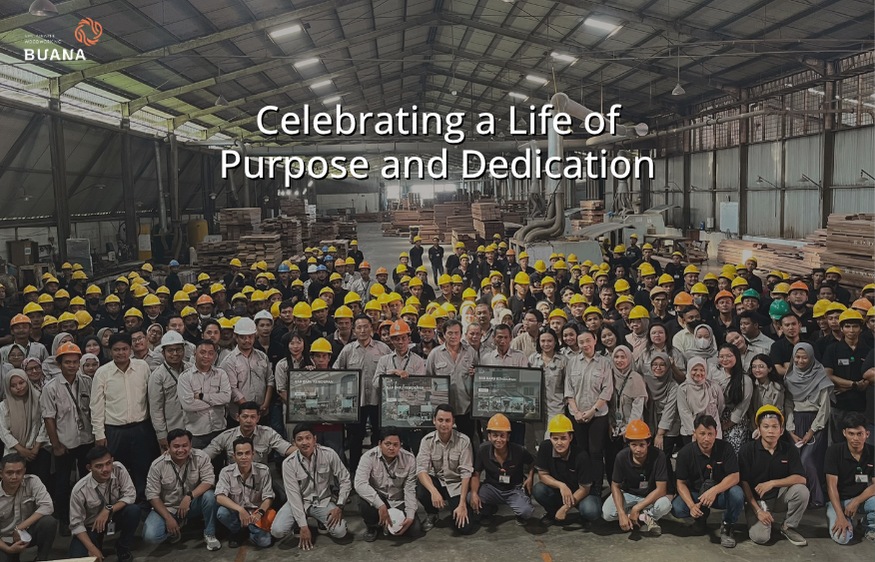Sustainable Raw Material For a Better Future (The importance of legal raw materials to achieve Buana's sustainable goals)

DID YOU KNOW?
Buana has two chain of custody certifications from the Indonesia Legal Wood and Forest Stewardship Council (FSC). Both of these certifications ensure that Buana uses legal wood as its raw material for the production process. This is very important because legal wood was harvested from a natural forest with the legal right for logging activity based on a silviculture system using selective cutting. This system is concerned with stages of rejuvenation, maintenance, and yield collection that are systematically designed and practiced directly on a stand throughout its life cycle to ensure the sustainability of timber production or other forest products [1].
WHAT IS THE IMPACT OF THIS METHOD?
This method also considers the regeneration of each species cut after the harvesting cycle. The harvested tree will be replaced by new generation trees that grow by purposed planting or natural growth [2]. According to Indonesia’s Environmental Statistics 2022, the additions to timber resources stocks that include natural growth and reclassification of natural forest in Indonesia show that there is an increase from 2020 to 2021 [3]. This means that there is a positive effect if we use legal wood from natural forests that are managed by sustainable forest management and a proper silviculture system.
WHAT IS THE IMPACT ON OUR PRODUCT ?
Buana is committed to becoming a sustainable woodworking industry that ensures all business processes are carried out with sustainable principles. Using legal wood as raw material makes the customer feel safe because the product that they buy is environmentally friendly. The fact that legal wood also has 0 emission conversion because the carbon that is released into the atmosphere will be stored by new-generation trees as the program of the silviculture system. Sustainable raw material management and greenhouse gas monitoring become Buana’s priority in preparing for a better future.
References :
[1] Forestry Ministry, Peraturan Kehutanan Nomor: P.65/Menhut-II/2014 tentang perubahan atas PeraturanMenteri Kehutanan Nomor: P.11/Menhut-II/2009 Tentang Sistem Silvikultur dalam Areal Izin Usaha Pemanfaatan Hasil Hutan Kayu pada Hutan Produksi, Jakarta, 2014.
[2] Tirkaamiana MT, Susilowati A. 2020. The study of silviculture system for selective cutting and line planting (TPTJ) and Indonesian selective cutting and planting (TPTI) application at PT Intracawood Manufacturing Bulungan Regency, North Kalimantan, Journal of Sylva Indonesia 3(1) : 46 - 59.
[3] Statistics Indonesia. 2023. Environmental Statistics of Indonesia 2023. Jakarta : Statistics Indonesia.
Latest Updates



